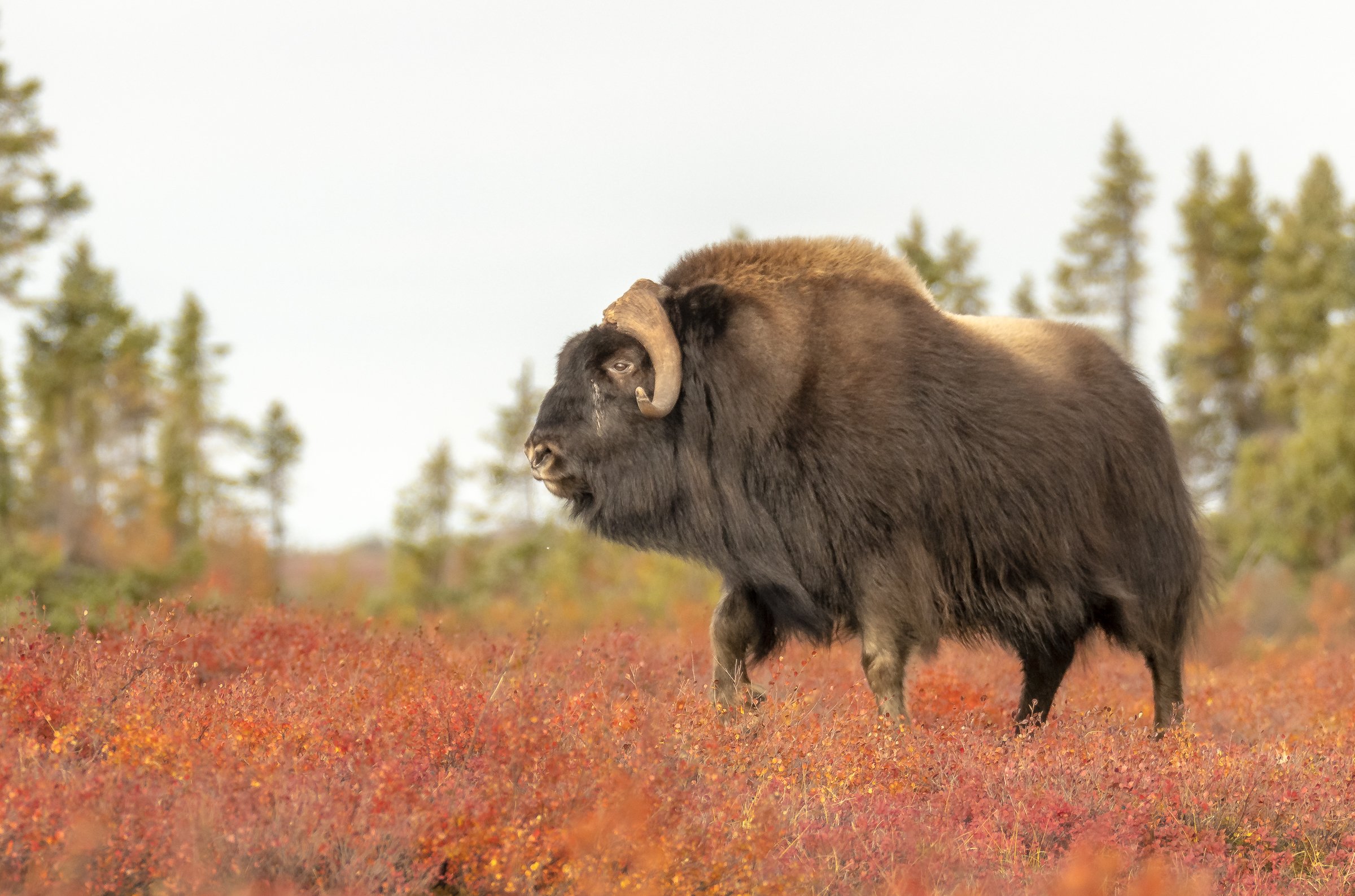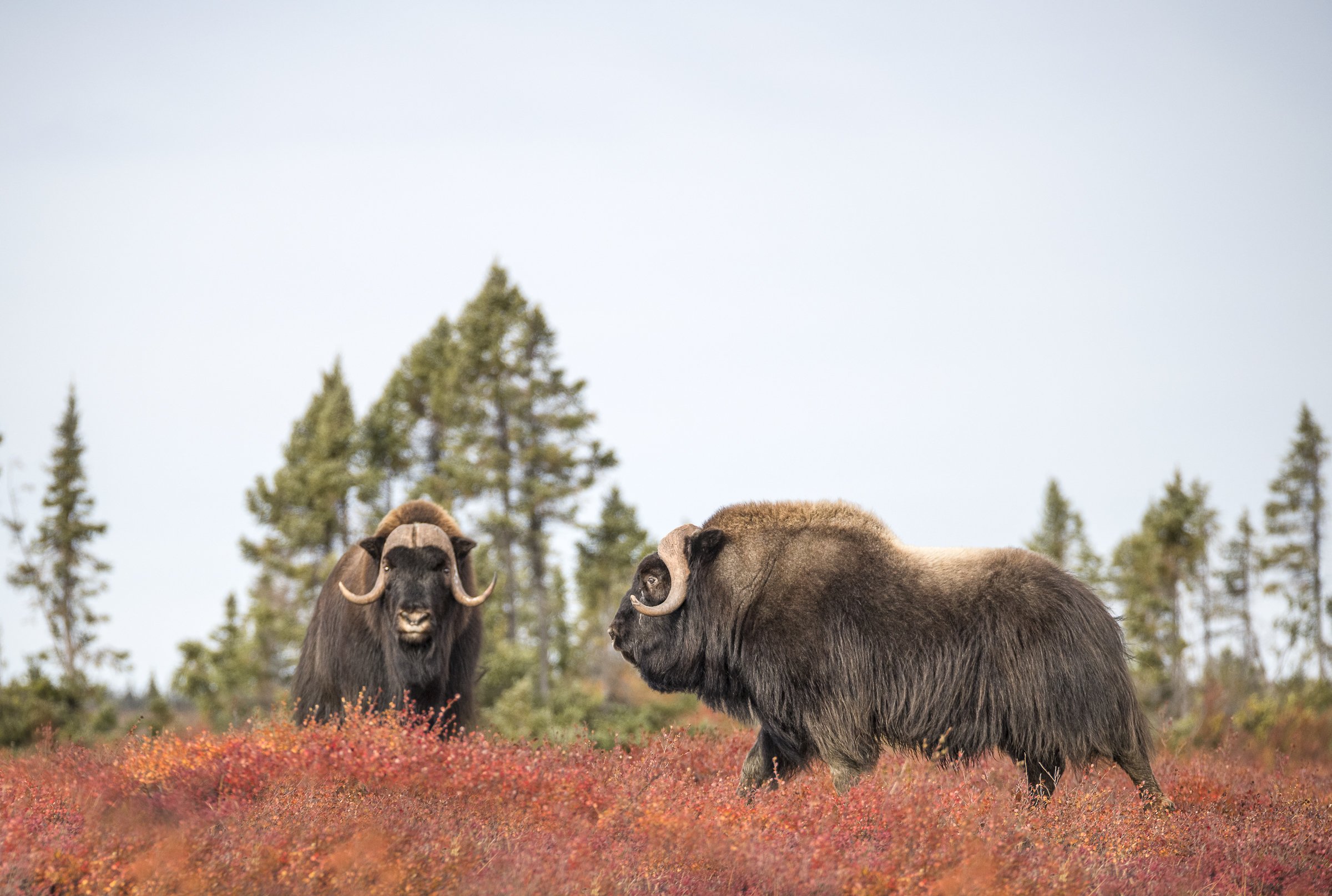Species Spotlight – Musk Oxen
COMMON NAME: Musk Ox
SCIENTIFIC NAME: Ovibos moschatus
TYPE: Mammals
DIET: Herbivore
GROUP NAME: Herd
AVERAGE LIFE SPAN IN THE WILD: 12 to 20 years
SIZE: Height at shoulder: 4 to 5 feet
WEIGHT: 500 to 800 pounds
Today, Musk oxen live in the frozen Arctic and roam the tundra in search of the roots, mosses, and lichens that sustain them. In winter, they use their hooves to dig through snow to graze on these plants. During the summer, they supplement their diet with Arctic flowers and grasses, often feeding near water.
Arctic Adaptations
Dating back to about 187,000 to 129,000 years ago, muskoxen are known as the shaggy survivors of the Ice Age. The outer hairs, called guard hairs, cover a second, shorter undercoat that provides additional insulation in winter. This undercoat falls out when temperatures climb at winter's end.
Female musk oxen carry their calves during an eight-month pregnancy, but after birth, there is little time to waste. The infants are able to keep up with their mothers and the rest of the herd within a few hours.
The thick outer coat can reach nearly 100cm in length, which is one of the longest of any animal. Under these guard hairs is a short, fine wool called qiviut. It is used by people to knit or weave the softest and warmest natural woollen material available. It is the most expensive wool one can use today.
Herd Behavior
Musk oxen are herd animals, and groups of two or three dozen animals are sometimes led by a single female. Herds use cooperation to deal with predation by wolves or dogs. When threatened, they “circle the wagons” and array themselves with their young in the middle and their sharp horns facing outward toward their foes. A cornered musk ox can be a fearsome enemy, charging with its massive bulk and attempting to use its horns to deadly effect.
Such defences are not terribly effective against human hunters, who killed great numbers of musk oxen for their hides and meat. Today, legislation protects herds in Canada, Alaska, Norway, and Siberia, where the animals live on preserves and National Parks.
The Musk Ox is my favorite animal. If there is a trip to be taken to photograph them, I have researched it, or planned a workshop to go photograph them. I lead a yearly workshop called Wildlife Bootcamp, where we can photograph Musk-Ox in the Yukon. I am also leading a workshop in 2023 and 2024 to photograph the wild roaming Musk-Ox in Norway. You can see all those workshops on my Wildlife Workshop page. See these workshops here
Info provided from Nat Geo



